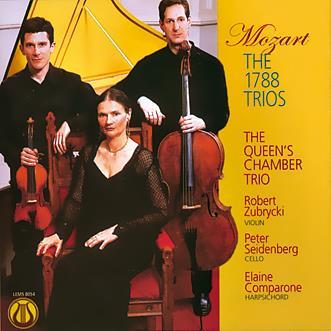
The Strad Issue: January 2007
Musicians: The Queen’s Chamber Trio
Composer: Mozart
The Queen’s Chamber Trio’s ‘decidedly revolutionary’ approach to these works, as claimed in the booklet, involves using a harpsichord rather than a fortepiano. While this has some historical credibility, the instrumentarium employed here is a period mismatch: a reproduction of a 1720 Blanchet harpsichord, an early 18th-century Grancino violin and Tecchler cello with modern set-ups, and bows by Lamy and Tourte. Modern pitch is also used. The result is an incongruity of technique and style, which is exposed to the full, for example, in the lifeless opening Allegro of K548.
On the plus side, the string playing is generally tidy, and Peter Seidenberg gratefully accepts those moments of glory only rarely allowed to cellists in Mozart’s trios, particularly in the cheerful, witty finale of K548. The graceful character of the slow movement of K542 is particularly well captured, but it is the somewhat uneven K564 that is arguably served best of all.
Although these accounts are not entirely devoid of charm, they do lack sufficient flexibility, lightness and dynamic contrast for optimum conviction. The close recording of the harpsichord makes its incisively edged tone seem larger than life, often resulting in heavy and ponderous performances; the slow, shapeless account of the finale of K542 is a case in point. Furthermore, these players’ tempo for the first movement of K542 hardly befits its Allegro billing, and their Andante cantabile of K458 plods along monotonously, rescued only by the introduction of some naturally flowing rubato. The recorded sound is at times astringent, and the acoustic is more resonant than is ideal.
ROBIN STOWELL


























No comments yet